Sampath Dechu
Goal-Oriented Next Best Activity Recommendation using Reinforcement Learning
May 06, 2022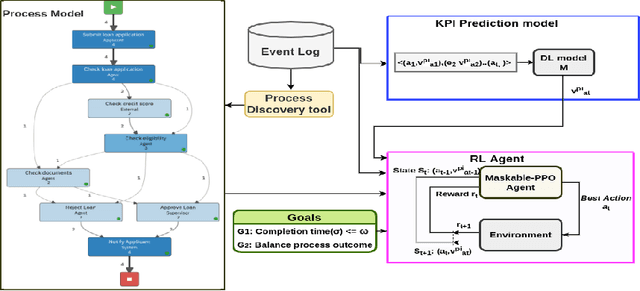
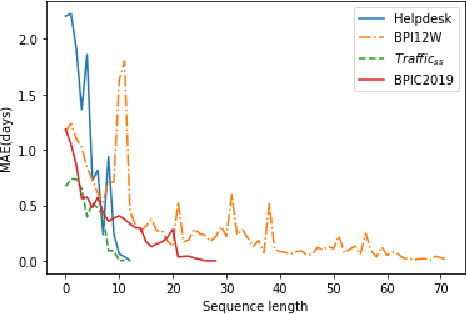

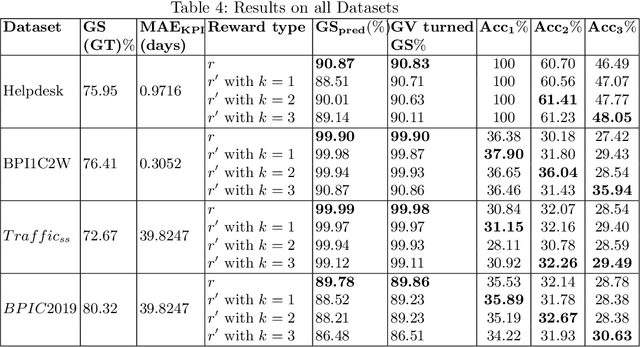
Abstract:Recommending a sequence of activities for an ongoing case requires that the recommendations conform to the underlying business process and meet the performance goal of either completion time or process outcome. Existing work on next activity prediction can predict the future activity but cannot provide guarantees of the prediction being conformant or meeting the goal. Hence, we propose a goal-oriented next best activity recommendation. Our proposed framework uses a deep learning model to predict the next best activity and an estimated value of a goal given the activity. A reinforcement learning method explores the sequence of activities based on the estimates likely to meet one or more goals. We further address a real-world problem of multiple goals by introducing an additional reward function to balance the outcome of a recommended activity and satisfy the goal. We demonstrate the effectiveness of the proposed method on four real-world datasets with different characteristics. The results show that the recommendations from our proposed approach outperform in goal satisfaction and conformance compared to the existing state-of-the-art next best activity recommendation techniques.
Online Similarity Learning with Feedback for Invoice Line Item Matching
Feb 14, 2020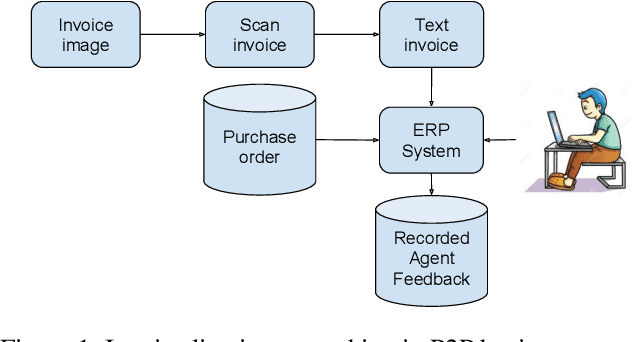

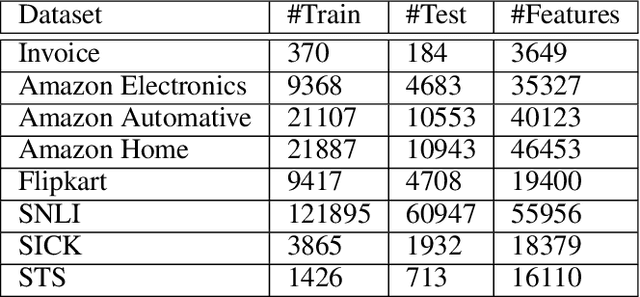
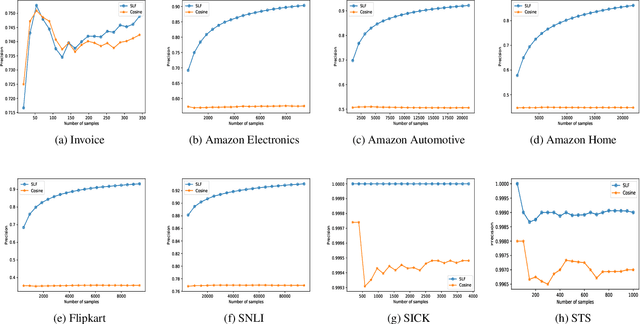
Abstract:The procure to pay process (P2P) in large enterprises is a back-end business process which deals with the procurement of products and services for enterprise operations. Procurement is done by issuing purchase orders to impaneled vendors and invoices submitted by vendors are paid after they go through a rigorous validation process. Agents orchestrating P2P process often encounter the problem of matching a product or service descriptions in the invoice to those in purchase order and verify if the ordered items are what have been supplied or serviced. For example, the description in the invoice and purchase order could be TRES 739mL CD KER Smooth and TRES 0.739L CD KER Smth which look different at word level but refer to the same item. In a typical P2P process, agents are asked to manually select the products which are similar before invoices are posted for payment. This step in the business process is manual, repetitive, cumbersome, and costly. Since descriptions are not well-formed sentences, we cannot apply existing semantic and syntactic text similarity approaches directly. In this paper, we present two approaches to solve the above problem using various types of available agent's recorded feedback data. If the agent's feedback is in the form of a relative ranking between descriptions, we use similarity ranking algorithm. If the agent's feedback is absolute such as match or no-match, we use classification similarity algorithm. We also present the threats to the validity of our approach and present a possible remedy making use of product taxonomy and catalog. We showcase the comparative effectiveness and efficiency of the proposed approaches over many benchmarks and real-world data sets.
Hi, how can I help you?: Automating enterprise IT support help desks
Nov 02, 2017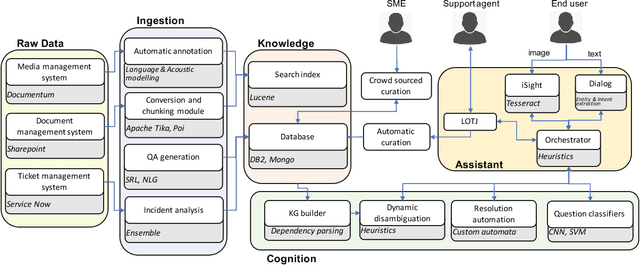
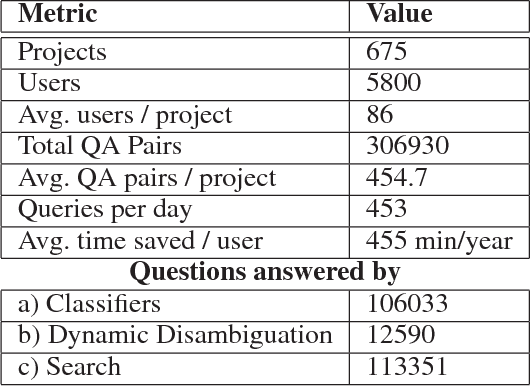
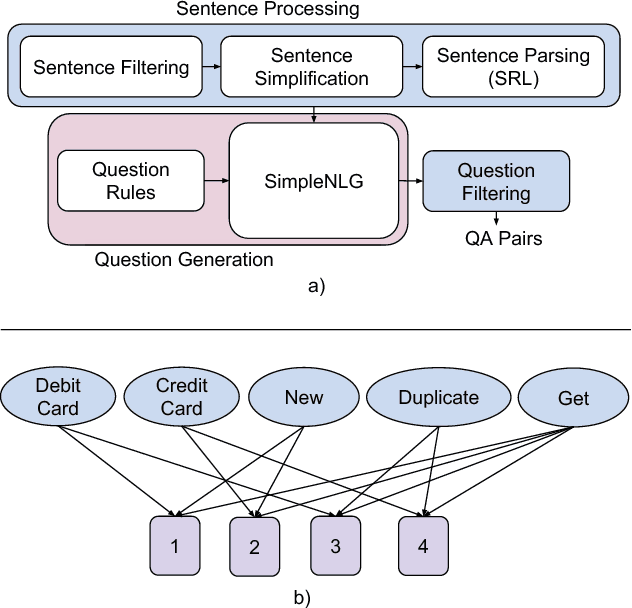
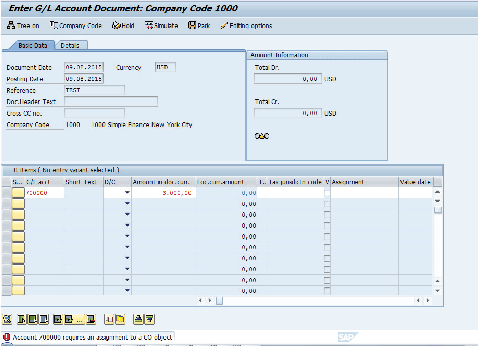
Abstract:Question answering is one of the primary challenges of natural language understanding. In realizing such a system, providing complex long answers to questions is a challenging task as opposed to factoid answering as the former needs context disambiguation. The different methods explored in the literature can be broadly classified into three categories namely: 1) classification based, 2) knowledge graph based and 3) retrieval based. Individually, none of them address the need of an enterprise wide assistance system for an IT support and maintenance domain. In this domain the variance of answers is large ranging from factoid to structured operating procedures; the knowledge is present across heterogeneous data sources like application specific documentation, ticket management systems and any single technique for a general purpose assistance is unable to scale for such a landscape. To address this, we have built a cognitive platform with capabilities adopted for this domain. Further, we have built a general purpose question answering system leveraging the platform that can be instantiated for multiple products, technologies in the support domain. The system uses a novel hybrid answering model that orchestrates across a deep learning classifier, a knowledge graph based context disambiguation module and a sophisticated bag-of-words search system. This orchestration performs context switching for a provided question and also does a smooth hand-off of the question to a human expert if none of the automated techniques can provide a confident answer. This system has been deployed across 675 internal enterprise IT support and maintenance projects.
 Add to Chrome
Add to Chrome Add to Firefox
Add to Firefox Add to Edge
Add to Edge